Images, video and audio from this Web site are provided without login for the purpose of editorial use only.
You must contact media@ford.com to obtain approval for advertising, marketing or other commercial users.
Ford Media Center
Dearborn, Mich., August, 20, 2015 - When Mustang first debuted in 1964 it singlehandedly defined the Pony Car segment and has been setting the standard for design ever since. It has influenced trends in every aspect of vehicle styling including the steering wheel. The all-new Mustang carries on that leadership trend. From bare aluminum and resin, to Alcantara-wrapped with drive-mode and steering-effort control, Ford is reinventing the wheel.
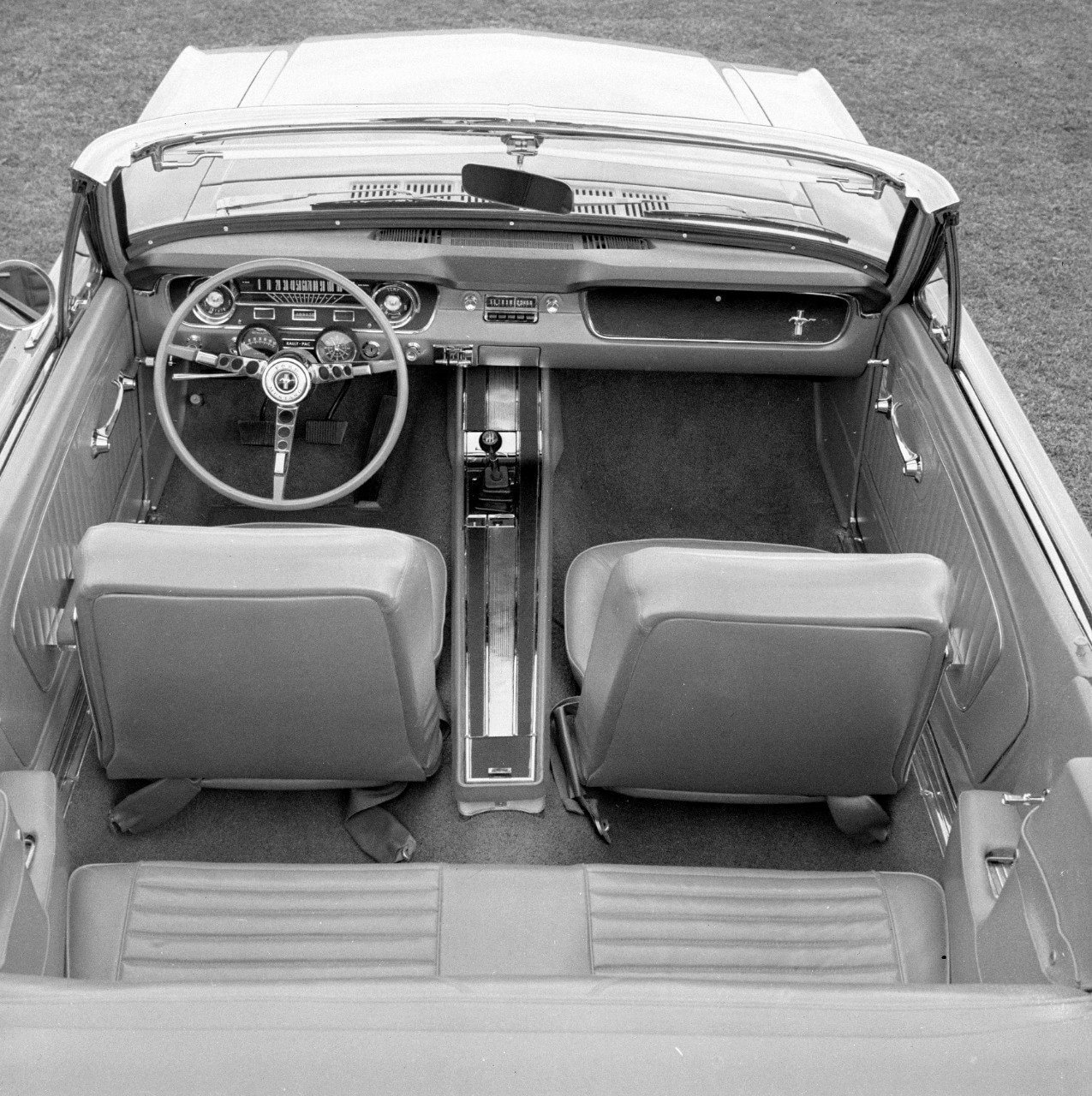
1964: The first-generation Mustang was a worldwide sensation. An original design America couldn’t get enough of, it established the classic long nose, tight cabin, abrupt trunk proportion stance, which has become Mustang’s signature look. The Mustang interior had its own appeal, with a twin cockpit layout and what would become an iconic steering wheel with three bare-aluminum spokes and a simulated wood rim with a center horn ring. The wheel’s large 16-inch diameter allowed for easy turning, as power steering was optional equipment.

1967: As Mustang matured, new features were added to make it more functional and more convenient for enthusiast buyers. A tilt-away wheel with seven adjustments was available. This allowed drivers to choose the steering position that fit their preference, while also improving vehicle entry and exit without sacrificing looks or practicality. A new faster ratio (20.3:1) power steering system became available in 1967, making turn-in quicker for a sportier feel.
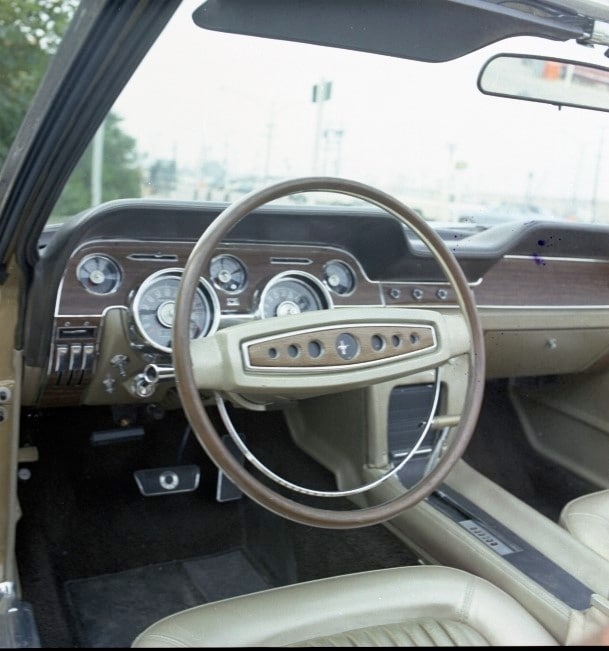
1968: Safety became a priority, and a collapsible steering column was added to Mustang to aid in reducing the possibility of injury in a crash. To bolster this feature, the redesigned two-spoke steering wheel featured a larger, cushioned center section. The center hub horn control was replaced with the small, metal half-circle on the bottom half.
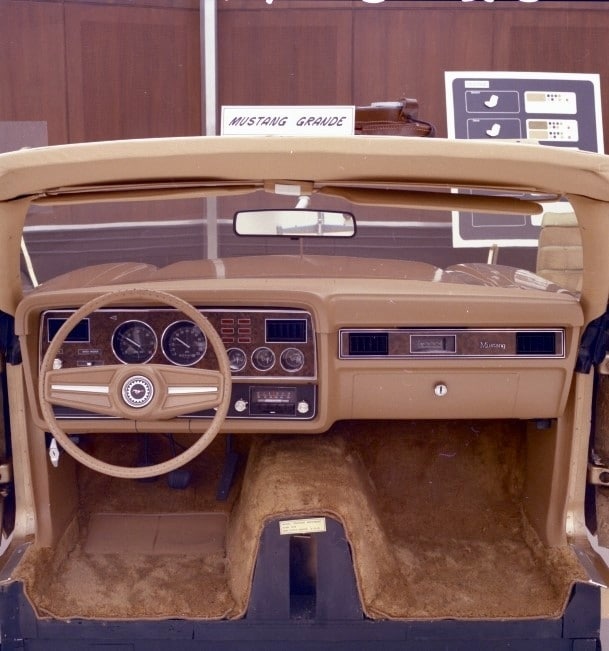
1974: With the launch of the all-new second-generation Mustang II, design took a new, contemporary direction. The three-spoke wheel was replaced with a leather-wrapped two-spoke wheel. Mustang II introduced available power rack-and-pinion steering – allowing cars equipped with that feature to have a smaller 15-inch wheel as opposed to the standard 16-inch one.

1979: With introduction of the much-loved Fox Body Mustang, more European design language was adopted inside and out. The two-spoke wheel from Mustang II was replaced with a four-spoke wheel, which was later shared with other Ford products. Wiper and light controls moved to a steering column stalk. The Fox Mustang steering wheel was a harbinger, incorporating vehicle controls for the first time. Cruise control was offered on manual transmission-equipped cars, with the feature controlled by buttons on the steering wheel.

1984: Mustang was developed into a high-performance variant with the legendary Special Vehicle Operations Mustang. In addition to the high-output turbocharged four-cylinder engine, SVO Mustang’s performance upgrades included an aggressive tilting three-spoke steering wheel featuring a thicker rim and smaller outside diameter for a sportier look and feel. The Ford logo and “SVO” are embossed into the leather on the center of the wheel.

1990: Mustang received its first airbag as standard equipment. Because the airbag was located in the center of the steering wheel, the horn was moved from the center to two spoke-mounted buttons, easily accessible by the natural position of the driver’s thumbs. Cruise control buttons were also placed in a more ergonomic position.
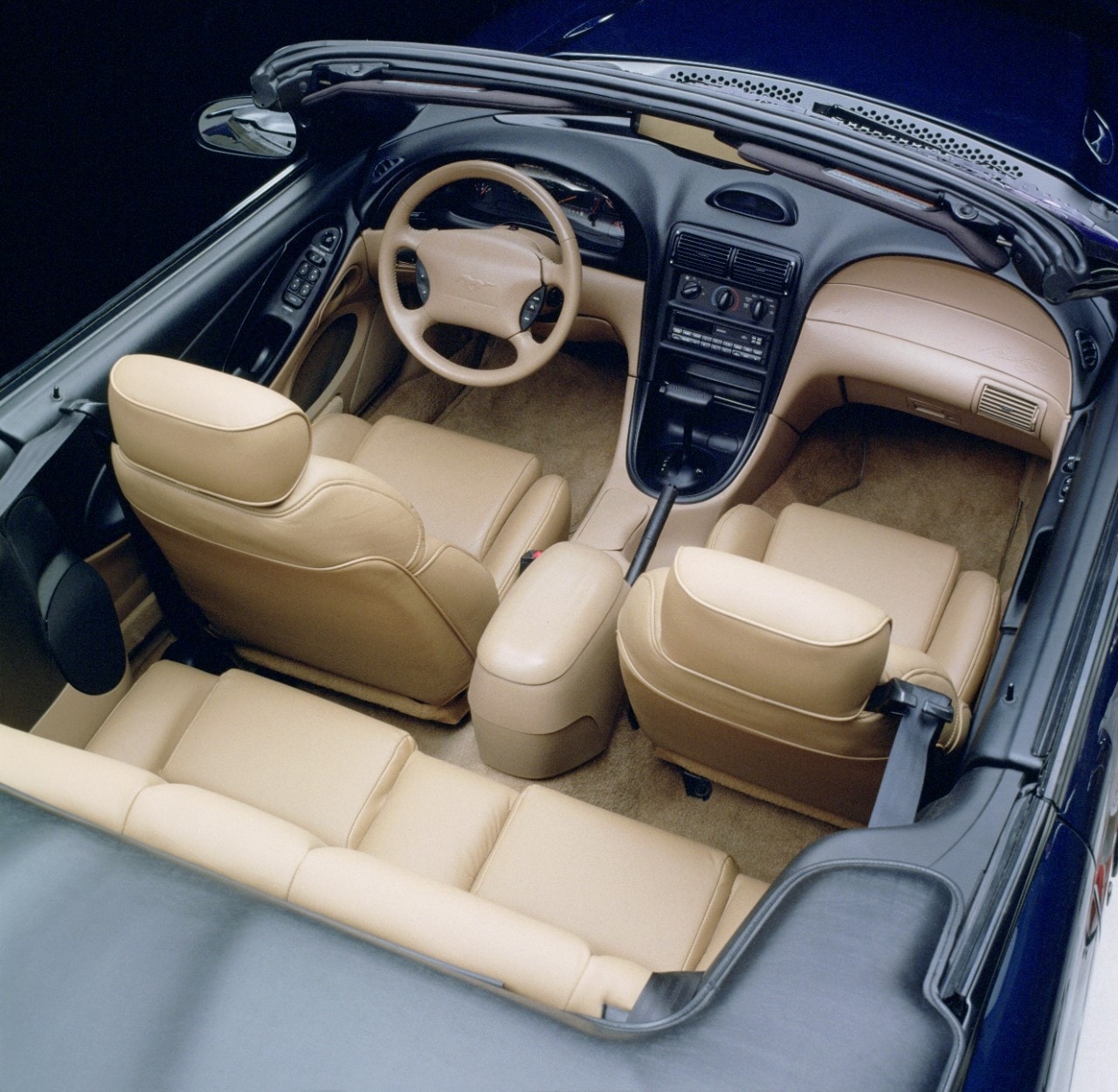
1994: The launch of the fourth-generation Mustang included a nod to the original 1964 pony car, with a twin cockpit layout and sculpted modern styling for the steering wheel and airbag. Various buttons became easier to use, while allowing for the driver to keep eyes on the road and hands on the wheel. Horn buttons were replaced with a hinged airbag cover, acting as horn control at the wheel’s center.
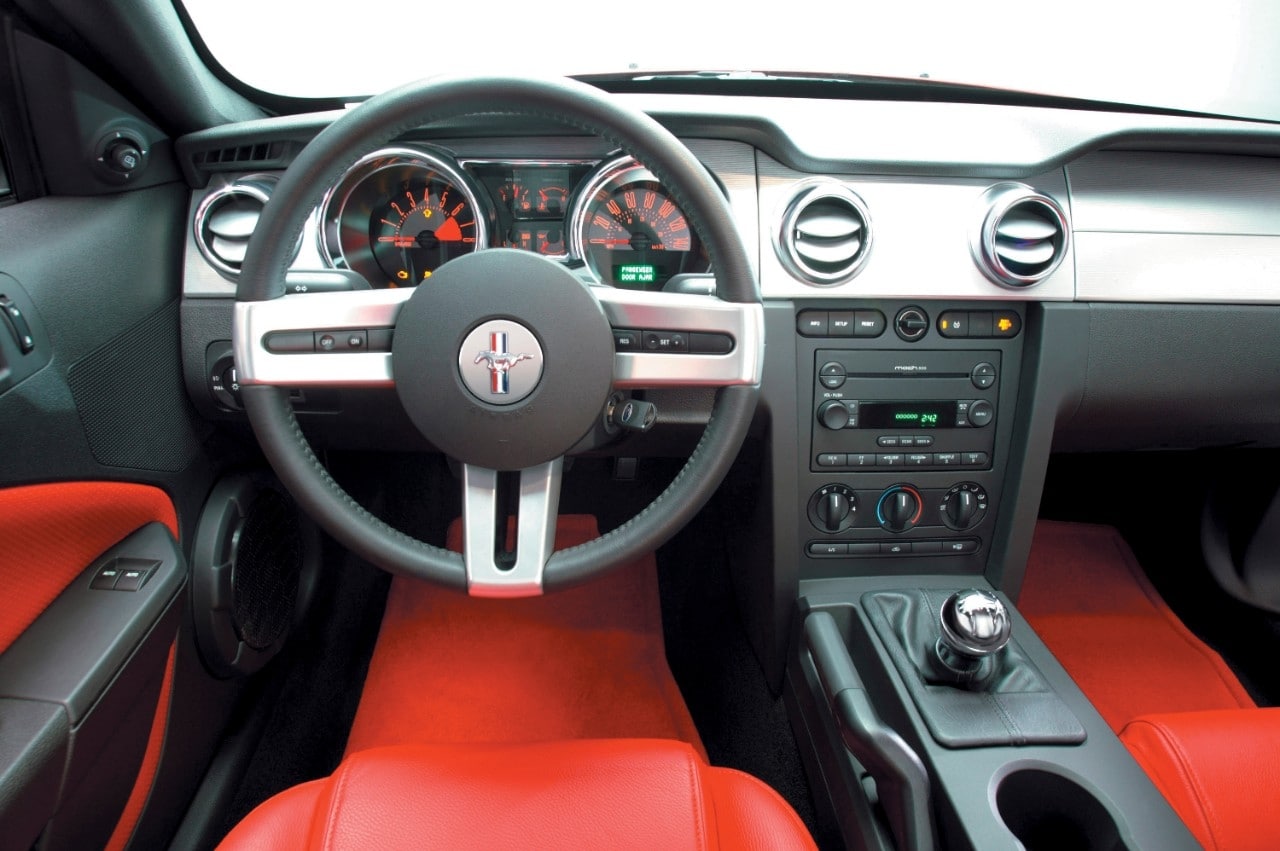
2005: Based on the 1965-1967 Mustang design, this three-spoke wheel appeared on the fifth-generation Mustang. This wheel was available with standard urethane spokes, or optional aluminum spokes with the interior upgrade package. Unlike the steering wheels it was based on, this rim came wrapped in leather.
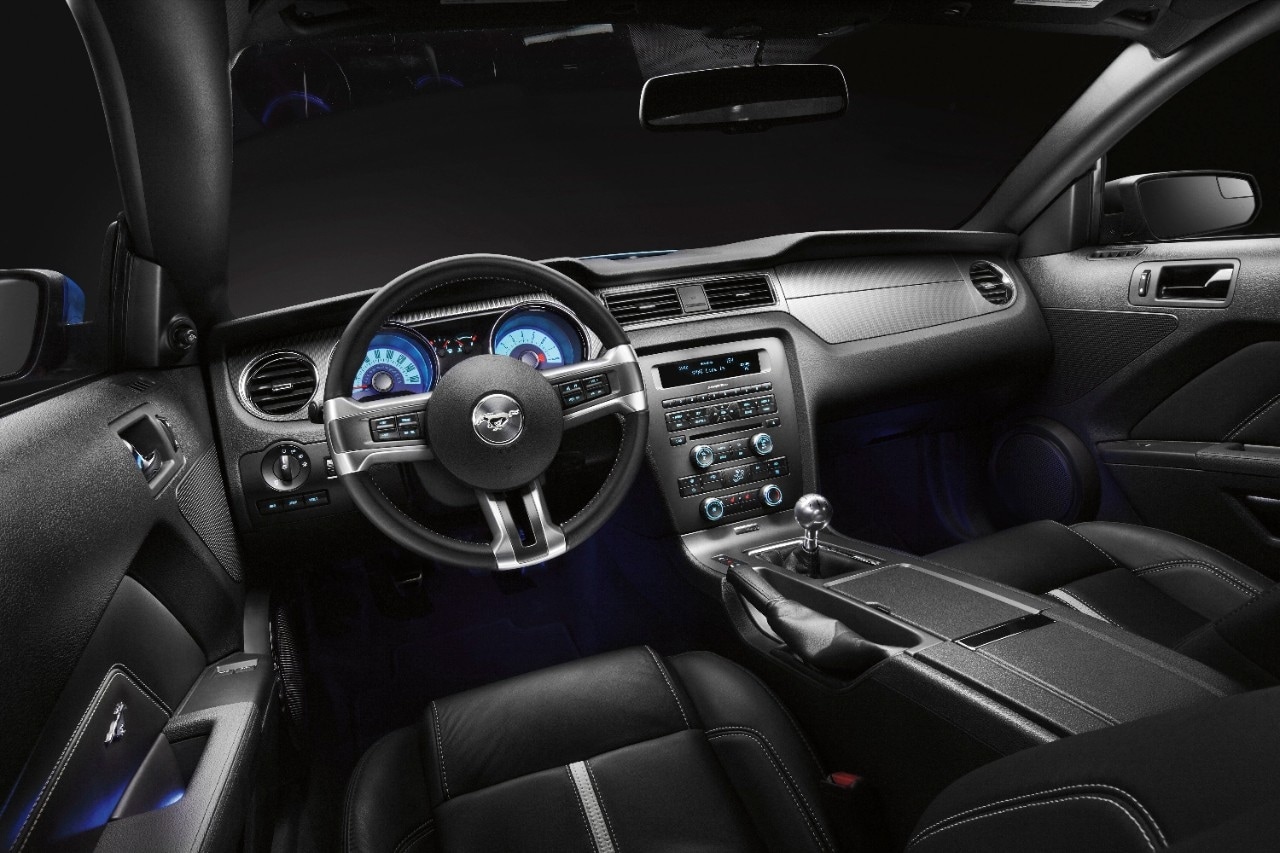
2010: Many buttons were added for SYNC voice control technology, including volume, phone, audio input selections and track/station selectors. The center badge changed from over-molded acrylic to high-quality spun aluminum with a polished aluminum horse, or snake in the case of Shelby GT500. Aluminum spokes hooking into the leather mimicked design elements of the center stack to impart a universal theme throughout the cabin. Contrast stitching in the steering wheel was available with the interior upgrade package.
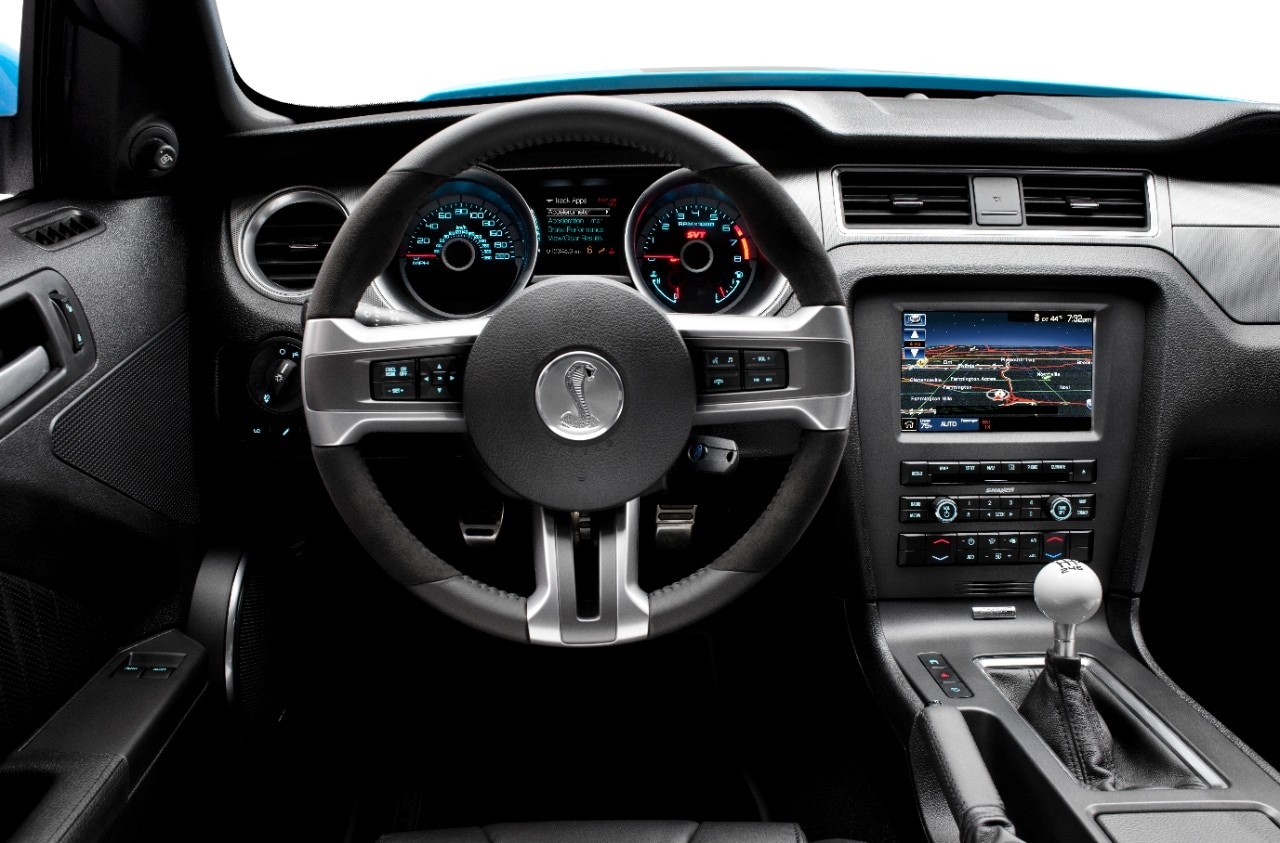
2013: In further refinement of the Mustang steering wheel as the in-car tech control center, the wheel was revised to include a four-way control button, plus an “OK” button for instrument cluster screen control. Boss 302 and Shelby GT500 Mustangs got a race-inspired Alcantara-wrapped steering wheel.

2015: A totally redesigned steering wheel for the all-new 50th anniversary Mustang incorporates more controls than ever. Up to 20 buttons can be found on the wheel of the sixth-generation pony car, controlling everything from adaptive cruise control to SYNC functionality. Buttons on the right side of the wheel control SYNC and the radio, while buttons on the left deal with the driving controls and gauge cluster screen. Paddle shifters are available with automatic transmission-equipped Mustang for the first time – mounted on the rear of the steering wheel. The circle airbag in this wheel had to be specially designed to keep with Mustang heritage, as it’s the only steering wheel in Ford’s lineup with a circle airbag. It is also the company’s smallest diameter wheel, at just 14 inches. The aluminum spokes are trimmed back from the rim so the driver’s hands only touch leather when holding the wheel.

GT350: The Shelby GT350 and GT350R Mustangs represent the most track-capable street-legal Mustangs to date, and feature a race-inspired flat-bottom steering wheel with additional driver controls. Shelby drivers can make myriad adjustments to the car without taking their hands from the wheel. Wheel-adjustable features include electric power steering effort, MagneRide suspension settings, advanced drive mode selections and exhaust tuning. As with race car steering wheels, the rim is wrapped in Alcantara, and GT350R includes a stripe on the center at the top, which is designed to let the driver know when the wheel is at true center. For Shelby Cobra, the logo appears on the center of the wheel – the only place inside the car where the logo can be found. Spokes are finished in a darker hue than on Mustang GT – complementing the aggressive nature of Shelby Mustang.
Ford Motor Company (NYSE: F) is a global company based in Dearborn, Michigan, committed to helping build a better world, where every person is free to move and pursue their dreams. The company’s Ford+ plan for growth and value creation combines existing strengths, new capabilities and always-on relationships with customers to enrich experiences for customers and deepen their loyalty. Ford develops and delivers innovative, must-have Ford trucks, sport utility vehicles, commercial vans and cars and Lincoln luxury vehicles, along with connected services. The company does that through three customer-centered business segments: Ford Blue, engineering iconic gas-powered and hybrid vehicles; Ford Model e, inventing breakthrough electric vehicles along with embedded software that defines exceptional digital experiences for all customers; and Ford Pro, helping commercial customers transform and expand their businesses with vehicles and services tailored to their needs. Additionally, Ford provides financial services through Ford Motor Credit Company. Ford employs about 174,000 people worldwide. More information about the company and its products and services is available at corporate.ford.com.